MRRL Hall of Fame
STOOGES
- Details
- Category: Inductees
- Created: Friday, 30 September 2011 08:36
- Written by Gary Johnson
Although the Stooges were sometimes put down in their home state of Michigan, they have emerged over the years as the most important of the Detroit-area bands of the late 60’s in regards to their influence in both the Punk Rock movement in the 70’s and the Grunge Rock bands of the 90’s. Led by the outrageous and self-destructive Iggy Pop, the Stooges produced three classic studio albums before flaming out in 1974, only to be improbably rekindled almost 30 years later.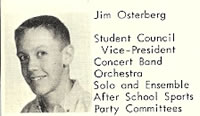
James Osterberg (a.k.a. Iggy Pop) was born in Muskegon, Michigan, in 1947. Shortly after his birth, Jim’s family moved to Ypsilanti, MI, where his father got a job teaching English at the local high school and his mother worked in an office in nearby Ann Arbor. There was a post-war housing shortage in the area at this time, and the Osterberg family lived in a in a trailer park off of Carpenter Road.
Although he was an only child, Jim grew up among lots of other ‘baby boomer’ kids and attended an elementary school located across the street from his home. According to Paul Trynka’s biography of Iggy Pop, Open Up And Bleed, even after his father landed a better-paying teaching position in the Dearborn school district, he continued to keep his family in the park because he felt that “trailers made sense”. In fact, Jim’s parents would not move from that location until 1982.
Jim Osterberg went through school as an academically successful and popular student who was an avid golfer and had impressive public speaking skills. Fellow students remembered him as a clean cut, ‘preppy’ dresser, but also being somewhat ashamed that he lived in a trailer park.
Jim’s introduction to music came with the drums that he played first in the school marching band and then orchestra. He didn’t get into Rock and Roll until 1961 when he befriended guitarist Jim McLaughlin. The duo practiced together long hours after school before making their debut at their junior high grade spring talent show.
By the time Osterberg and McLaughlin started attending Ann Arbor High, they had been joined by a bassist, sax player, and another guitarist to form and band that Jim named The Iguanas. The band played area high school dances and University of Michigan frat parties.
Jim got a job after school at Ann Arbor’s Discount Records under the supervision of manager Hugh “Jeep” Holland. (Holland would first call him “Iguana” at the store, and that would eventually lead to the famous the “Iggy” nickname.) It was while working at Discount Records that Jim first got to know brothers Ron and Scott Ashton who often hung out on Liberty Street outside the store..jpg) The Iguanas
The Iguanas
During the summer of 1965, The Iguanas got a dream gig as the house band at the Club Ponytail in trendy Harbor Springs, Michigan.
Playing five nights a week, they developed into a tight little band confident enough to back visiting stars such as The Shangri-Las, Four Tops, and Bobby Goldsboro when they appeared at the club. After their return home, the band recorded a single at United Sounds Recorders in Detroit; an original tune called “I Don’t Know Why” backed by a cover of Bo Diddley’s “Mona”.
By the end of the year, however, the scene was changing in Southeast Michigan. Spearheaded by the national success of Mitch Ryder and The Detroit Wheels’ breakout hit, “Jenny Take A Ride”, and the rise of area teen clubs, a host of tough young bands playing Blues and Soul-based music emerged as the leaders of a new musical trend.
The Rationals, Bob Seger & The Last Heard, The Underdogs, and The Fugitives to name just a few, were headlining the teen clubs, putting out singles on small independent Michigan labels, and garnering airplay on Detroit-area AM stations. Jim sensed the changes, and he left the Iguanas at the end of 1965 to drum for a new Ann Arbor band called The Prime Movers. Ron Asheton worked as a roadie for the band.
With his nickname of Iggy now firmly entrenched, he played with the Prime Movers for a year before he decided to move to Chicago and become a Blues drummer. While in the Windy City, Iggy worked with Big Walter Horton, J B Hutto, and James Cotton. He also met John Sinclair for the first time while living in Chicago. Iggy, however, suddenly decided to end his Blues odyssey and was back in Ann Arbor for the summer of 1967.
Ron and Scott Asheton had moved to Ann Arbor with their mother in 1963, following the death of their father. The brothers had first played in a garage band with classmate Dave Alexander called The Dirty Shames. 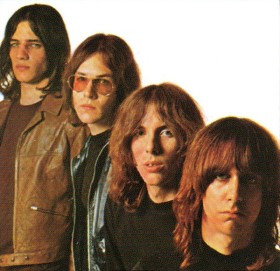 Scott Asheton, Ron Asheton, Dave Alexander, Iggy Pop
Scott Asheton, Ron Asheton, Dave Alexander, Iggy Pop
After he left his roadie job with The Prime Movers, Ron had played in a group with singer Scott Richardson called The Chosen Few. Ron and the Chosen Few had the honor of opening the Grande Ballroom in 1966. After Richardson had left the band to front the Scot Richard Case, Ron was looking to put together a new band. His love of the Three Stooges led to the moniker 'Psychedelic Stooges' for the new group that he formed with Iggy, his brother Scott, and eventually Dave Alexander.
The Psychedelic Stooges made their debut in Ann Arbor on Halloween night in 1967 and impressed John Sinclair, the manager of The MC5. Sinclair recommended the band to Russ Gibb and he booked them for their Grande debut in January of 1968.
At this time, Iggy was still imitating Mick Jagger and Jim Morrison on stage. The reaction of the teen crowds to the repetitive riffing of the band was often hostile.
Out of this, Iggy soon developed his own style – performing shirtless with ultra-tight, imitation leather pants and intentionally provoking the audience.
The band was signed to Elektra Records when company representative Danny Fields flew into Michigan to see The MC5. Fields also got to see Iggy and company while in Michigan, and he ended up signing both bands to his label. The band name was shortened to the Stooges and John Cale, formerly of the Velvet Underground, was chosen to produce their first album in New York City. 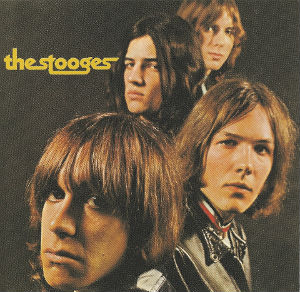 "The Stooges" debut album
"The Stooges" debut album
Following the completion of the album, the Stooges were booked at a college in Delaware, Ohio. It was at that performance that Iggy cut himself on stage for the first time using the shards of a broken drumstick.
The Stooges also got a lot of notice for their performance at the Delta College Pops Festival near Bay City, Michigan in the summer of 1969. Iggy had taken a young woman out of her seat and carried her around the auditorium. It turned out that she was the daughter of Donald Carlyon, the president of the school. The incident resulted in the withholding of the Stooges’ $300 fee and their barring from the college, but the story of "The Dean's Daughter" also generated a great deal of publicity for the Stooges.
The band’s first album was released soon after. The highlights of the band’s debut, “The Stooges”, are many. “1969”, released as the Stooges’ first single, kicks off the album with guitar riffs inspired by an unlikely source – an album cut called “Tribal Gathering” by the Byrds. Other notable songs include “I Wanna Be Your Dog”, “No Fun”, and “Real Cool Time”, but the record-buying public wasn’t ready for the crunching, repetitive sound of “The Stooges” and it peaked at # 106 on the Billboard Album Chart.
The band toured in support of their record and succeeded in both shocking and awing their audiences. They were already writing songs for a second album planned for the spring of 1970 at the Elektra Studios in Los Angeles. This time the producer was Don Gallucci, a former member of The Kingsmen and the keyboard player on their immortal recording of “Louie, Louie”. The album would be titled “Fun House” after the band’s communal home on Packard Road in Ann Arbor..jpg) "Fun House" LP
"Fun House" LP
Augmented by sax player Steve Mackay on several cuts, “Fun House” was even more powerful and aggressive than The Stooges’ debut. Released in August of 1970, the album’s first side of “Down On The Street”, “Loose”, “T.V. Eye”, and “Dirt” are simply unrelenting. Side two then blasts off with “1970" and “Fun House” before ending in an atonal freak-out called “L.A. Blues”. Although it is considered a classic today, the album was not well-received at the time.
Complicating things further, Iggy had become enamored with cocaine. The band also suffered its first casualty when Iggy demanded that Dave Alexander be fired after a disastrous drunken performance at the Goose Lake Festival in the summer of 1970. Roadie Zeke Zettner was then promoted to bass player to replace Alexander on the band’s tour.
Unfortunately, heroin also became part of the band starting with a series of shows in New York City. Band members began being paid in drugs, and communication within the Stooges ceased as the band broke into different factions.
Guitarist James Williamson joined The Stooges in late 1970, and his drug-related friendship with Iggy and Scott Asheton, left brother Ron Asheton as the odd man out. The band continued in a heroin-fueled downward spiral through the first half of 1971, and that summer The Stooges were dropped from the Elektra label.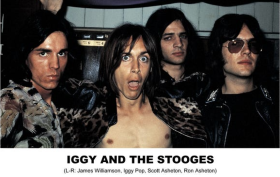 (L to R) James Williamson, Iggy Pop, Scott Asheton, Ron Asheton
(L to R) James Williamson, Iggy Pop, Scott Asheton, Ron Asheton
With The Stooges in shambles, Iggy plotted a solo career. He met David Bowie and his manager Tony Defries and they helped Iggy get a recording deal with Clive Davis at Columbia. Iggy went to London in 1972 to record and brought his new songwriting partner, James Williamson, with him.
After they failed to find a rhythm section to their liking, Iggy and Williamson sent for the Asheton brothers. With Ron now demoted to bass, the band went into CBS Studios in London with Iggy in the producer’s chair.
The new album, “Raw Power”, would be credited to Iggy and The Stooges and released early in 1973 with David Bowie doing the final mix. All eight songs were written by Iggy Pop and James Williamson. The album is another classic, albeit in a different way than the first two Stooges albums.
“Raw Power” kicks off with one of the album’s strongest tracks, “Search And Destroy”, followed by a cool tribute to Jim Morrison called “Gimme Danger”, and the intensity never lets up as one powerful track leads to another on the album that would eventually be regarded by many as an audio blueprint for punk rock.
Unfortunately, the drug use and debauched behavior continued to accelerate as the Stooges toured in support of the new album. Iggy’s performances and general behavior were becoming more unpredictable and unreliable as the band lurched into 1974.
It was somehow fitting that the band’s end came in Michigan. It started with a gig at a small club called the Rock & Roll Farm. Iggy confronted a group of bikers and was punched by one of them during the show. Afterwards, the band appeared on Detroit’s WABX and challenged the biker gang to show up at The Stooges' upcoming show at the Michigan Palace. 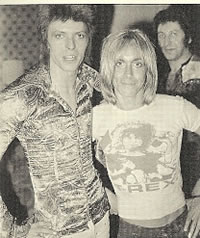 Bowie & Iggy
Bowie & Iggy
The resulting performance turned into a scary event with Iggy insulting the audience and bottles, coins, ice cubes, and even an egg being tossed at the stage. The band’s chaotic final show at the Michigan Palace was recorded and released as an album on Skydog Records called “Metallic KO” in 1976.
After the break-up, Ron and Scott Asheton would form a short-lived band called New Order. After its demise, Ron would go on to play in another band called Destroy All Monsters and Scott would join Sonic’s Rendezvous Band. Original bassist Dave Alexander died in Ann Arbor in 1975 of pulmonary endema that was brought on by inflammation of the pancreas – a condition often related to alcohol abuse.
Iggy would hit rock bottom in Los Angeles for the next two years until his career was revived with the help of David Bowie. Bowie would produce two solo albums with Iggy in 1976, “The Idiot” and “Lust For Life”.
The next year Bowie would tour with Iggy as his keyboard player and help reestablish his performing career. James Williamson also worked with Iggy during the early part of his solo career as a producer and engineer, most notably on the 1979 album “New Values”.
Up until 2003, Iggy had little contact with the Asheton brothers. That year he decided to revive The Stooges and Ron and Scott joined him to play on several cuts on his “Skull Ring” album.
The reunited Stooges then proceeded to play a series of live dates in the United States and Europe with Mike Watt on bass and Steve MacKay rejoining the band on sax. The Stooges Homecoming Show at DTE Theatre near Detroit in August was cancelled by the 2003 North American Blackout, but the show was rescheduled and released as the DVD “Live In Detroit”.
In 2007, the Stooges released their first album of all new material in 34 years with “The Weirdness”.
The Stooges were voted into Michigan Rock and Roll Legends Hall of Fame in 2008.
The band had been nominated eight times for the Rock and Roll Hall of Fame before the announcement that they would finally be inducted in 2010. Unfortunately, Ron Asheton, the original architect of The Stooges' driving guitar sound, died of a heart attack at his home in Ann Arbor early in 2009. Asheton related in a 2008 interview that Madonna had asked The Stooges to perform in her place that year at her induction to the Hall of Fame as a protest to their continued exclusion. The Stooges fittingly stole the show as they performed crunching versions of Madonna’s “Ray Of Light” and “Burning Up” at the televised ceremony.
Rolling Stone magazine selected Ron Asheton as one of the 100 Greatest Guitarists in 2009. It also honored his guitar playing by naming "1969" as one of the 100 Greatest Guitar Songs. Several months after Asheton's death, the Stooges announced that James Williamson would rejoin the band as Ron's replacement.
In 2011, "I Wanna Be Your Dog" was voted a Legendary Michigan Song. It was joined by "1969" in 2014.
MRRL Hall of Fame: https://www.michiganrockandrolllegends.com/mrrl-hall-of-fame
Watch a performance of "I Wanna Be You Dog" from 2013
https://www.youtube.com/watch?v=m9xIm7Owyso
Dr. J. Recommends:
“The Stooges” Elektra Records CD. The Stooges debut CD is classic Detroit Rock and Roll.
“Fun House” Elektra Records CD. This is generally considered to be the best Stooges album. It might be, but they are all great.
“Raw Power” Columbia Records CD. You can find this classic in two versions. The original has David Bowie’s mix. In 1997, Iggy remixed his own version of “Raw Power”. It’s fun to listen to both.
On The Bookshelf:
Iggy Pop Open Up And Bleed by Paul Trynka. Broadway Books 2007. This is the ultimate biography of the Stooges and Iggy Pop. The author digs deep into Iggy's past with fascinating detail. The first half of the book that deals with Iggy's boyhood and his adventures with the Stooges is simply outstanding. This great Rock and Roll book is the source of most of the information for my above biography of the Stooges.
